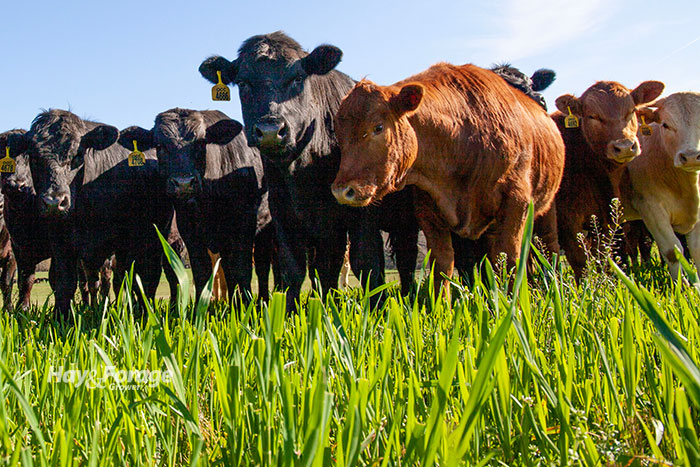
Cereal rye, winter triticale, and winter wheat make a good menu for stocker calves and cows on spring pastures. These three species of small cereal grains bring similar forage quality to the table; however, there is a short window of opportunity to capture their full benefits.
According to Mary Drewnoski, extension beef systems specialist, and Daren Redfearn, extension forage and crop residue specialist, with the University of Nebraska, cereal rye, winter triticale, and winter wheat have different characteristics to take advantage of. For example, cereal rye grows faster in cooler temperatures, making it more available for early grazing. Conversely, winter triticale retains feed value longer, so it can be grazed later in the season.
The specialists note stocker calves grazing small cereal grain forages can gain 3 to 4 pounds per day, and these crops can support the nutritional requirements of lactating dairy cattle. With that said, cereals mature quickly in the spring, so farmers must monitor plant growth and adjust stocking density to optimize animal performance.
Rotate livestock
Start grazing cattle when small cereal grains are approximately 5 to 6 inches tall. Then, move animals to different parts of a pasture to maintain a maximum plant height of 8 to 10 inches throughout the stand.
Rotational grazing promotes uniform plant maturity and prevents selective grazing. The specialists suggest a good starting point for stocking density in a rotational grazing system is one-half to one stocker calf per acre. Add animals or reduce the number of acres being grazed when forage growth exceeds defoliation rates.
“The most common mistake with spring grazing small cereal grains is letting the grass get ahead of the cattle,” the specialists state. “It is important to increase stocking density as the spring progresses to ensure cattle can keep up with the rapid forage growth.”
Provide magnesium
In addition to changes in forage quality, small cereal grains can be high in potassium this time of year. This interferes with animals’ ability to take up magnesium and may cause them to develop grass tetany.
To prevent this mineral deficiency, provide animals with supplemental magnesium. The specialists recommend purchasing a free choice mineral product that is 5% magnesium for stocker calves to achieve a targeted intake of 4 ounces of magnesium per animal per day. For lactating dairy cows, use a product that is at least 10% magnesium.

Amber Friedrichsen served as the 2021 and 2022 Hay & Forage Grower summer editorial intern. She currently attends Iowa State University where she is majoring in agricultural communications and agronomy.

